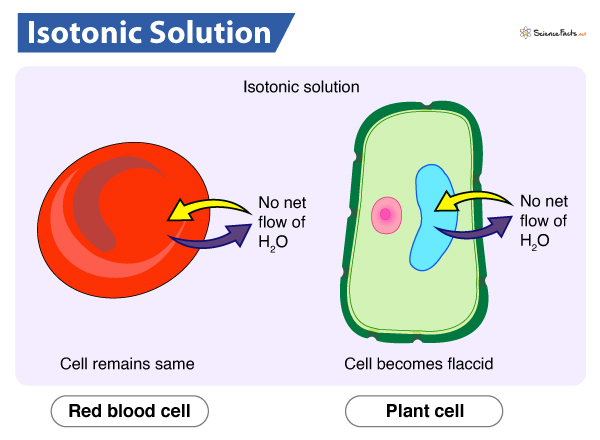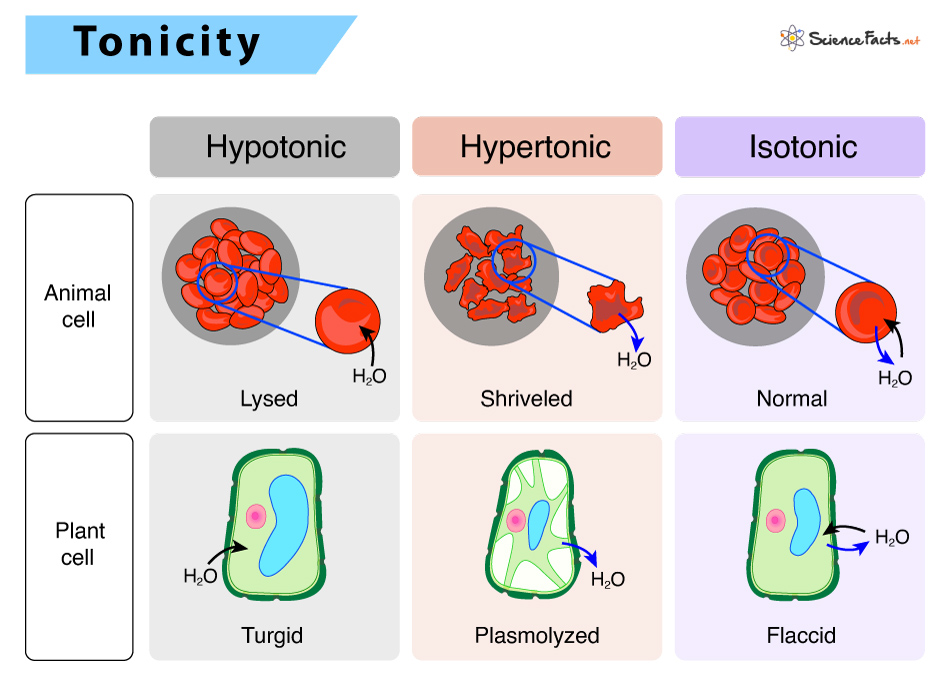It is generally measured with respect to the cytoplasmic concentration or tonicity of the cell. Here, the solute concentration, i.e., osmolarity (solutes per liter), remains equal on both sides of the cell membrane. Some of the most commonly used isotonic solutions are normal saline with 0.9% NaCl and lactated ringers.
What It Does to a Cell
What Happens to a Cell When Placed in an Isotonic Solution
Examples of Isotonic Solution
Difference between Isotonic, Hypotonic, and Hypertonic Solutions
Any living being, including humans, possess some regulatory mechanisms to achieve and maintain this homeostatic condition which helps them to carry out all the body functions with ease. As mentioned, an isotonic solution has the same solute concentration and osmotic pressure both inside and outside of the cell. Generally, solutes and water move following their concentration gradient (from higher to lower concentration), but this difference does not exist in case of isotonic solutions. Consequently, there is no net flow of water, i.e., osmosis does not occur. For instance, freshwater fishes, such as catfish and gourami produce very dilute urine to prevent the loss of salts from their body. Thus, it helps them to keep their salt and water balance in check.
In Blood Cells
Blood plasma is generally isotonic to the cytoplasmic concentration of blood cells. These cells tend to maintain this isotonic environment both internally and externally, as osmotic pressure greatly influences blood pressure. Also, they aim to maintain isotonicity to prevent the swelling or shrinking of the blood cells.
In Plants
In plants, the transport of various essential solutes and water occurs across the cell membrane following their concentration gradient, i.e., from higher to lower concentration. In case of an isotonic solution, no difference in concentration exists between the internal and external environment of the cell. As a result, no exchange of nutrients and water take place. Plants do not receive their required nutrition, and lack of water makes them appear wilted. So, plants usually prefer a hypotonic environment over an isotonic one. The table below shows the comparison between these three types of solutions:

